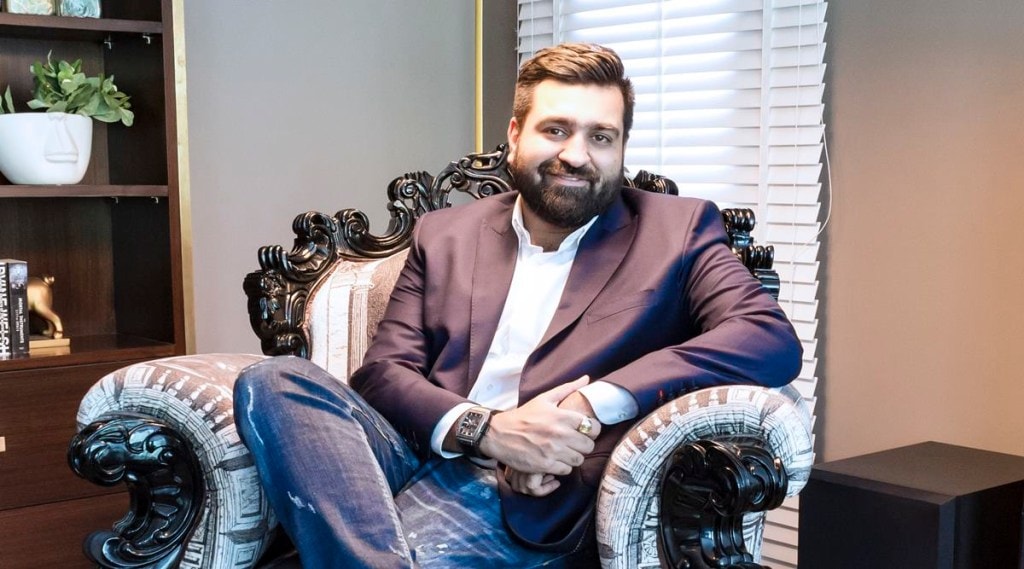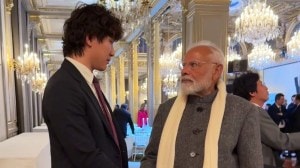New Delhi arguably has the best food scene in India. There are many quirky outlets and experimental restaurants that have cropped up in the last few years, giving tough competition to the long-standing dine-in options in the city. Priyank Sukhija began his journey at the age of 19 with no experience in the industry but with a passion for food. Being dyslexic, Priyank never had an interest in studies and he decided to start a restaurant called Lazeez Affaire with some initial capital put down by his father. In an exclusive interview with financialexpress.com, Priyank talks about his love for food, his 30 outlets, the constant need to experiment with food, the struggles, and more. Excerpts from the interview:
You started your journey at the age of 19 and since then there has been no looking back. Tell us something about it.
It’s definitely been quite a journey since I first began. As a 19-year-old kid who had just dropped out of college and was fighting dyslexia, my career options were quite slim. I’ve always had a penchant for food, both eating and serving, and parties, which invariably pushed me towards the idea of starting my own restaurant. I came from a family of lawyers and so had no guidance when it came to the nuances of running a business. Lazeez Affaire came about after intensive research, trials and errors, and learning the business end of the rope. Despite stepping into the unknown, I trusted my tongue and love for food, which gave me the confidence I needed back then. Once the restaurant opened and I saw the smiles on the faces of our customers as they tried our dishes, I was convinced that this was exactly what I was meant to do.
Also read: Is rum really a winter drink? Know everything about your favourite spirit
When and how did you realize your love for food?
That can be quite tough to answer, to be honest. I can’t pinpoint the exact moment I realised my love for food, but I do remember it being from quite a young age. Even in school and through what little college I attended at first, I was best known as the person who always knew the best-hidden spots for all kinds of food, and I enjoyed being that person and sharing my knowledge and experiences.
From then to now, how has the industry changed?
I can safely say that the industry has been on a rollercoaster ride since 1999 when I first started. Back then, the industry offered extreme hospitality options; every outlet was either fine-dine or an outright club. Lazeez Affaire, my first restaurant, also followed the fine-dine norm. However, since then, a lot has changed. The industry slowly changed to make way for middle-ground: casual dining. With outlets such as Lord of the Drinks, Tamasha, Flying Saucer, and more, our patrons could enjoy the best of both, dining and dancing. By the time 2019 rolled around, the industry was ready for another change; this time into experiential dining. The audiences wanted something more than a casual dining space, looking for outlets that offered more than just good food. Conceptual and experiential outlets such as Plum by Bent Chair, Dragonfly Experience, and Diablo, were able to take centre stage.
Also read: Peeking into the future: The plant-based non-veg menu of 2030
What is your go-to food type?
This is, by far, the toughest question I’ve ever had to answer. As a foodie, my heart craves for it all, but my comfort food is one that goes back to my roots and heart: Chhole Bhature. I’ll never say no to Indian street food, or even Mughlai for that matter.
How do you ensure that you match the taste of people from across India? You have outlets in several cities.
Through all my travels and experiments, I’ve understood one simple thing: Though everyone craves something new, they feel most comfortable in the familiar. This is why most of my outlets and brands focus on a progressive or fusion-style cuisine. This gives our audiences a chance to try something new, from an entirely new global cuisine, while still being able to indulge in their native tastes. This phenomenon is not native to only India but is prevalent around the world. The ‘Indian cuisine’ found in America and UK tastes vastly different from the authentic but is loved by the audiences there as it has been modified to suit their palates. I try to include popular tastes from around India in all my menus to ensure that we can offer something to everyone.
What are the things you keep in mind while preparing your menu?
Definitely versatility. As you mentioned, India is a vast country with varying tastes in every corner. Every time I set out to curate a menu with my head chef, I try and include at least one dish for every palate. The other thing I keep in mind is creating a healthy balance of new and undiscovered dishes for those seeking to add a little adventure to their plates.
It’s not just food, you are also interested in décor, and Bent Chair is an example. Tell us about that. (I just love the concept)
I think decor and events became a part of my territory with the onset of experiential and concept dining. The rise of Instagram pushed the industry into a race to become the ‘most Instagrammable’ spot in town, which heavily involved the need for appropriate decor. I joined hands with Bent Chair back in 2018, launching Plum By Bent Chair, which was India’s first retail restaurant that allowed its patrons to purchase everything that saw inside the outlet. It brought about a stronger focus on decor and how the right designs only add to the experience of the patron. Since then, the decor has played an equally important role in all my launches, allowing for better execution of themes and concepts. With my upcoming brand Noche, this partnership will only take a step forward.
How do you deal with competition?
I simply work hard to do better. For me, my only competition is the man in the mirror, and with every launch and new brand, I try and do better. Everyone else in the industry is a peer and an entrepreneur like myself, creating unique experiences that push the boundaries of all that India has to offer as a collective industry. I learn from them; from their successes as well as failure, but I only compete with myself.
Are you planning to work on something for college-going kids?
I don’t suppose that any of my outlets restrict the entry of college-going kids as such, I mean, Diablo and Bougie are some of their favourite go-to spots these days. I try and always create spaces that fit the aesthetic of everyone, in terms of cuisine, vibe, aesthetics, and experiences. Though I am constantly innovating in the experiential space, I do update and evolve my existing brands to offer something exciting for everyone. My recent launch, Butter Room, was revamped keeping in mind a more casual and everyday vibe that college-going kids may find more suitable
What are the hardships that you deal with as a restaurateur? I mean, it’s not always profit.
Every time I feel like I’ve seen it all, I come across a new roadblock that throws me off and forces me to find new solutions. For a career spanning 23 years, that’s a lot of curveballs! Of course, making sure that my brands are profitable is one of the bigger issues we focus on, but there have been a lot of others as well, which have directly or indirectly contributed to it. One of the biggest hardships have always been to correctly estimate when the audiences are ready for something new. For example, I had introduced sushi in an Asian-cuisine based brand back in 2006, but had to quickly shut it down because I believe our audience was not open to experimenting back then. Today, sushi and pan-Asian dishes are some of the most popular dishes from all my brands. Likewise, I have faced hardships in understanding how to run a parent company that houses over 35 outlets around the country, and how to ensure that our brands don’t become just another forgettable outlet.
How do you deal with creativity block? The food industry is evolving and each day there’s something new.
I travel. I have found that nothing cures a creative block better and faster than venturing out of your everyday routine and comfort zone and venture into something entirely different. I love exploring new places and their hidden food gems, which often inspire the next ‘something new’ that I can bring to the Indian audiences.
What’s next? What are you treating us with now?
Looking into the immediate future, I’ve got Noche and Tickled Pink ready to open its doors to Delhites. They’re both poles apart when it comes to concepts, ideas, and audiences, and yet, my need to ensure that whoever enters leaves satisfied with the experience, runs strong through them both. Where Noche is a progressive Latin restaurant with heavy art influences, Tickled Pink is a feel-good comfort corner with fusion twists to favourite authentic dishes from every corner of India.








